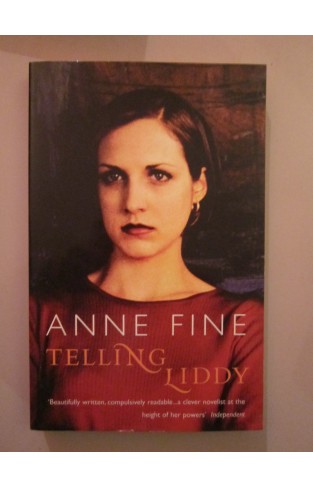Telling Liddy
By: Anne Fine
-
Rs 797.50
- Rs 1,595.00
- 50%
You save Rs 797.50.
Due to constant currency fluctuation, prices are subject to change with or without notice.
A portrait of 16th and 17th century Italian convent life, set in the vibrant culture of late Renaissance Venice. Early 16th century Venice had 50 convents and about 3,000 nuns. Far from being places of religious devotion, the convents were often little more than dumping-grounds for unmarried women from the upper ranks of Venetian society. Often entering a convent at seven years old, these young women remained emotionally and socially attached to their families and to their way of life outside the convent. Supported by their private incomes, the nuns ate, dressed and behaved as gentlewomen. In contravention of their vows they followed the latest fashions in hairstyles and footwear, kept lap dogs and threw parties for their relations. But in the 16th and 17th centuries the Counter Reformation was to change all that. Threatened by the advance of Protestantism, the Catholic Church set about reforming its own institutions. A new state magistracy rapidly turned its attentions to policing the nuns' behaviour relentlessly pursuing transgressors on both sides of the convent wall.
A portrait of 16th and 17th century Italian convent life, set in the vibrant culture of late Renaissance Venice. Early 16th century Venice had 50 convents and about 3,000 nuns. Far from being places of religious devotion, the convents were often little more than dumping-grounds for unmarried women from the upper ranks of Venetian society. Often entering a convent at seven years old, these young women remained emotionally and socially attached to their families and to their way of life outside the convent. Supported by their private incomes, the nuns ate, dressed and behaved as gentlewomen. In contravention of their vows they followed the latest fashions in hairstyles and footwear, kept lap dogs and threw parties for their relations. But in the 16th and 17th centuries the Counter Reformation was to change all that. Threatened by the advance of Protestantism, the Catholic Church set about reforming its own institutions. A new state magistracy rapidly turned its attentions to policing the nuns' behaviour relentlessly pursuing transgressors on both sides of the convent wall.
Zubin Mehta: A Musical Journey (An Authorized Biography)
By: VOID - Bakhtiar K. Dadabhoy
Rs 892.50 Rs 1,050.00 Ex Tax :Rs 892.50
Sweet Valley Confidential Sweet Valley High
By: Francine Pascal
Rs 531.25 Rs 625.00 Ex Tax :Rs 531.25
No similar books from this author available at the moment.
Zubin Mehta: A Musical Journey (An Authorized Biography)
By: VOID - Bakhtiar K. Dadabhoy
Rs 892.50 Rs 1,050.00 Ex Tax :Rs 892.50






















-120x187.jpg?q6)
















